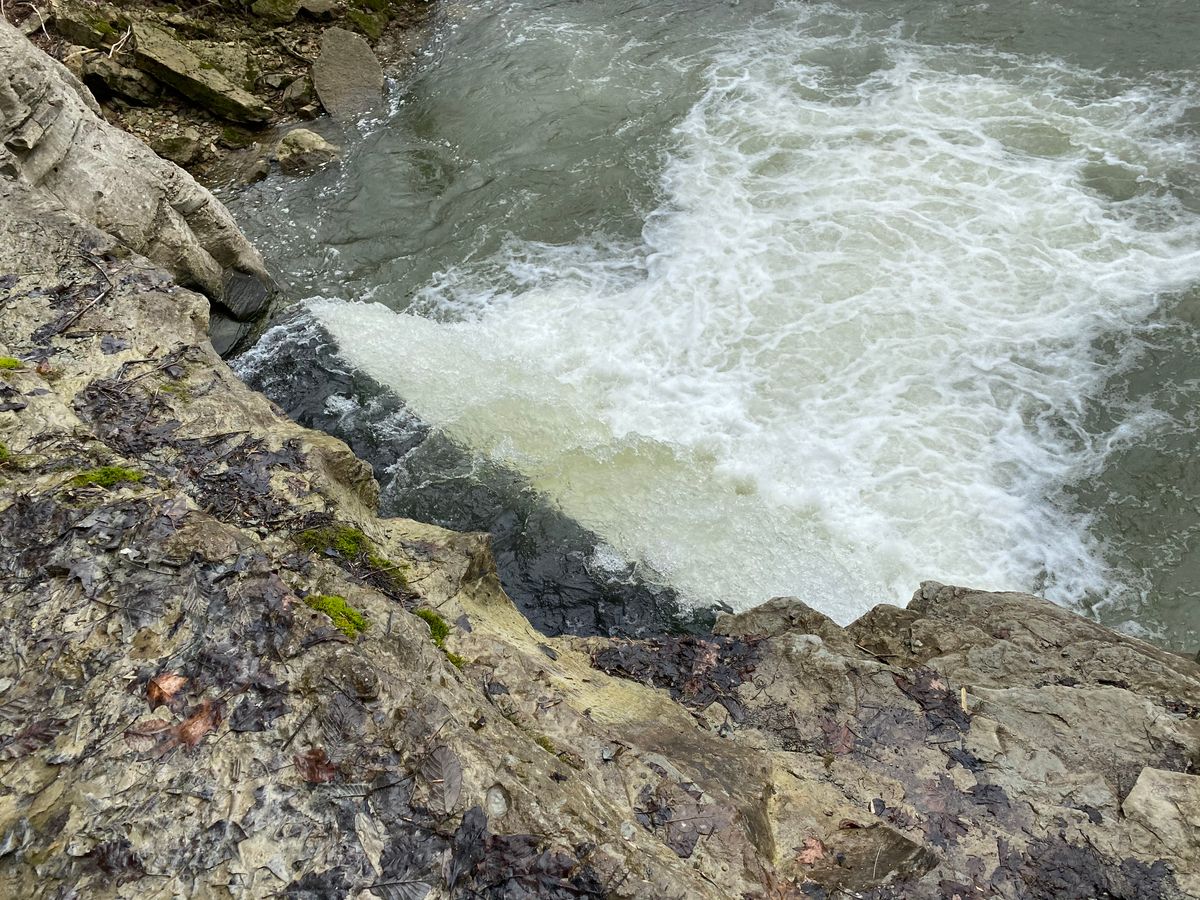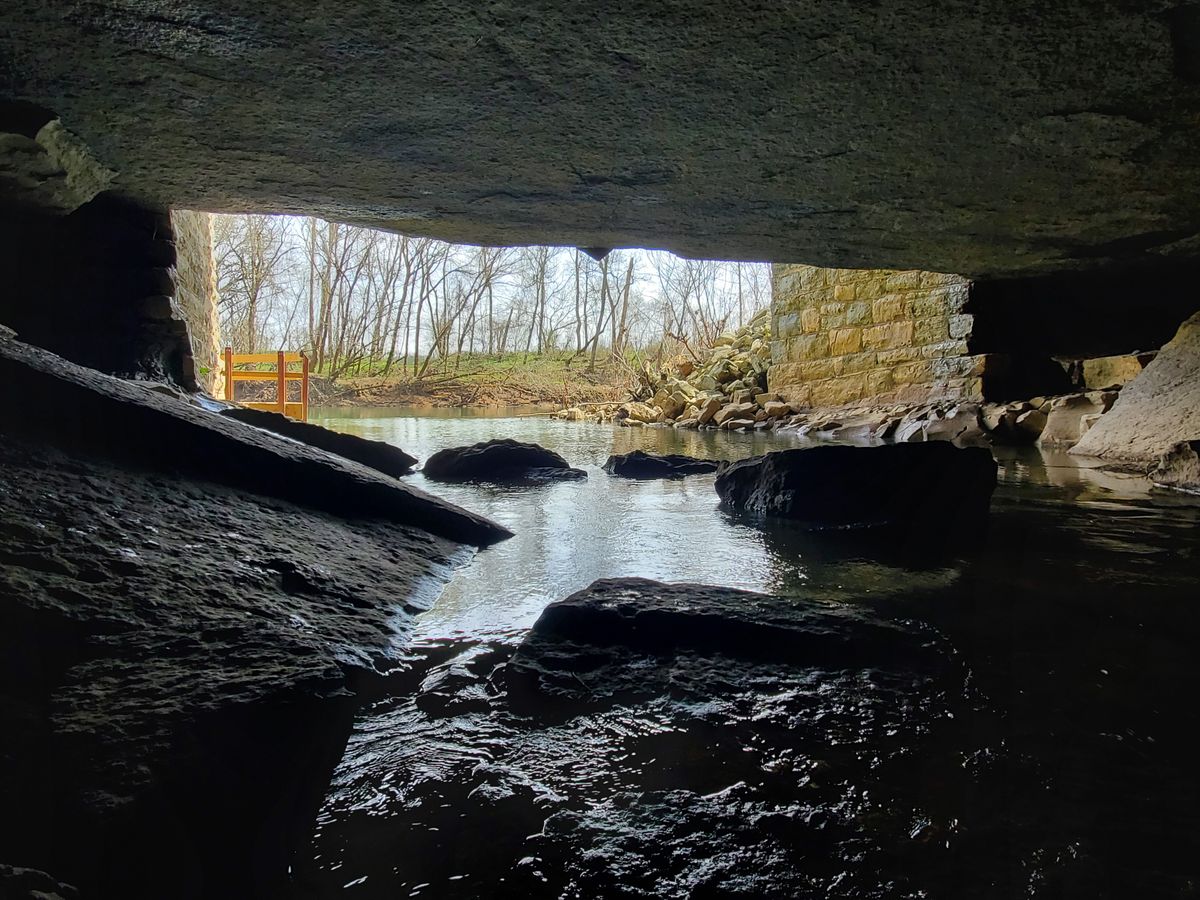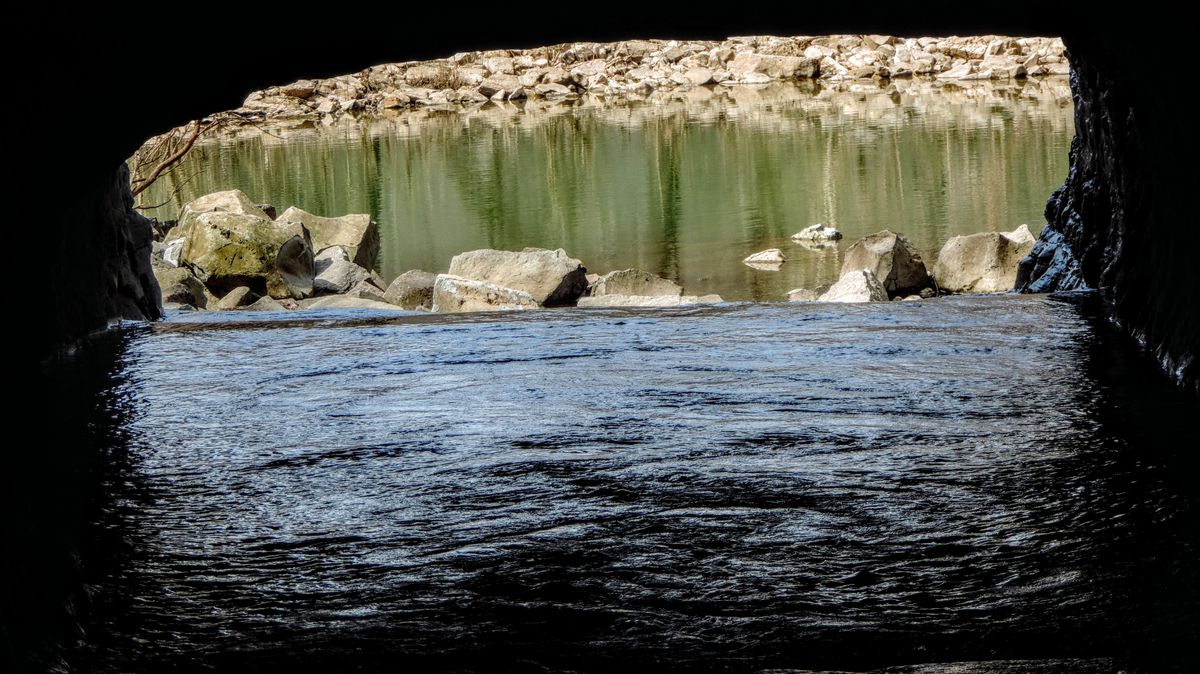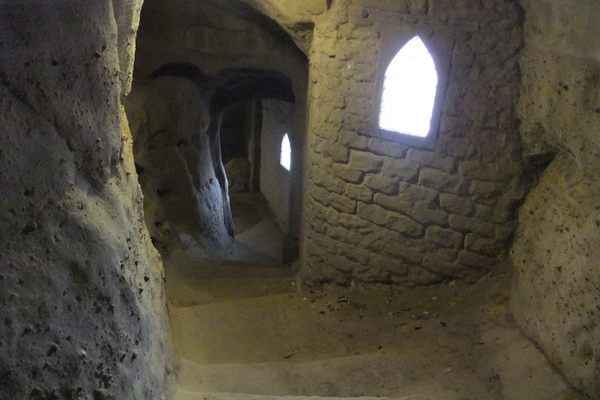About
Carved out of the natural limestone using gunpowder and slave labor, the Montgomery Tunnel was the United States' first successful water diversion tunnel.
Also known as the "Patterson Forge Tunnel" this waterway was built in the early 19th century to take advantage of the drop in river elevations in a bend in the Harpeth River, to operate an iron forge. It was blasted out of the limestone using black powder and slave labor, and is now a straight cut through the earth. This bend in the river is a popular day hiking and canoeing destination. The tunnel is large enough that there was a recent fire that started within the tunnel that grew large enough to destabilize the cave and the road overhead.
Montgomery Bell Tunnel was designated a National Historic Civil Engineering Landmark in 1981.
Update: As of 2017, parts of the inside of the tunnel have collapsed and it is no longer possible to walk through. While it is still accessible to view via the hiking trails, the swimming area below the falls now has No Swimming signs posted and the tunnel itself has a sign reading "hazardous, keep out".
Related Tags
Know Before You Go
There is a parking area right by the boat put-in for the Harpeth River, which happens to be next to the tunnel. Walk down the stairs and the tunnel will be to your right. If you traverse down to the tunnel and then through it, you will be treated with a beautiful waterfall and swimming hole on the other side. There are other access hiking trails directly to the swimming area that require no dark, dangerous tunnel walking, just follow the signs that say "tunnel access." Be careful and bring a flashlight if you go through the tunnel.
Community Contributors
Added By
Published
July 25, 2012














































